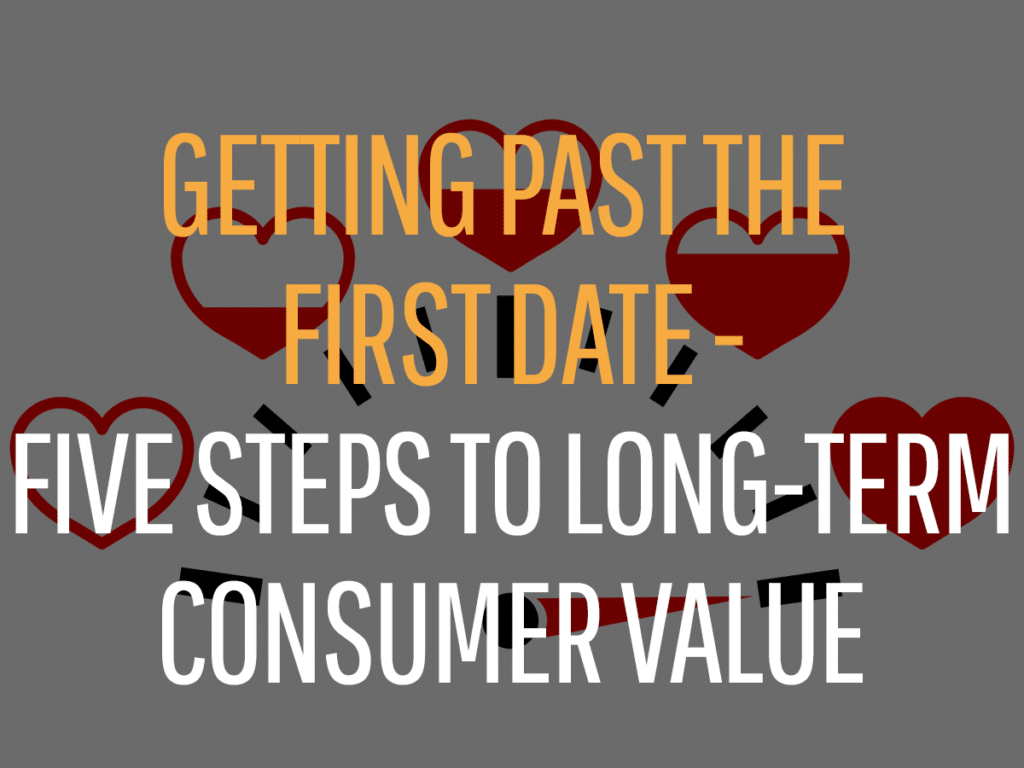THE IMPORTANCE OF LONG TERM CONSUMER VALUE
While 2020 has urged everyone to focus on social distancing, a surprising number of first dates are happening – first dates with new brands, that is. In a study on new patterns in consumer shopping behavior and mindsets, MIT shared that 54% of consumers recently purchased a brand they had not previously purchased. Not only are half of the consumers going on first dates, but new brands make up an impressive 30% of their shopping carts now.
This led me to dig deeper into how these shifting trends shape up long term consumer value. I’ve come up with five steps to extending those newfound relationships but firstly, let’s look at some of those trends.
CHANGING HABITS AND LIFESTYLES
This unprecedented spike in purchasing new brands is driven by pandemic-sparked lifestyle and behavior changes. This includes more home-centric lifestyles and making substitutions for favorite brands that are out of stock. The categories with the highest number of new brand purchases are packaged goods and beverages (24%), household products (20%), fresh and organic foods (13%), and personal care products (13%). Chameleon Collective’s recent survey on how the pandemic is changing our lives, work, and relationships show that 25% of workers anticipate working remotely 100% of the time post-pandemic, up from 8% before the pandemic, setting the stage for a long-term trend in more home-centric lifestyles.
BUILD RELATIONSHIPS
With so many brands suddenly securing that often coveted first date, the lingering question is how to get more dates. But let’s be honest here – the big question is how to establish a lifelong relationship. Many industries have quickly turned their attention to supply chain improvements to serve higher than expected consumer demand. Having products available for purchase is clearly an important factor in getting future dates. An even more important factor in strengthening your brand’s relationship with your consumers. In a study on what consumers want from brands in today’s societal landscape, Sprout Social survey data shows 57% of consumers saying they increase their spending with brands they feel connected to and 76% saying they are more likely to buy from brands they feel connected to than from competitors.
THE POWER OF NOW
Why focus on relationship building while products are hard to keep in stock? Imagine going on a first date and then waiting a year or longer to ask for the next date. Chances are the initial brand experience is a distant memory and consumers have turned their attention elsewhere. Getting started now while first impressions are still fresh creates a springboard for long term relationships.
LIFELONG CONSUMER RELATIONSHIPS
Five key steps to turning first brand dates into lifelong relationships for long term consumer value:
- Get to know your consumers. Knowing your consumers and understanding their needs, wants, and preferences are foundational to building a long term relationship. Whether you leverage your social media platforms or more traditional marketing research, getting to know your consumers is the first step. Sprout Social’s data shows that more than half of consumers (51%) say their relationship with a brand starts when they feel the brand understands them and their desires. Getting to know your consumers does not have to exhaust your marketing budget. There are a variety of research methods, ranging from quick surveys and informal interviews to consolidated deep dives that provide a comprehensive view upfront. These methods are scalable to fit your brand’s needs.
- Clarify your brand values. Take a clear stance on what your brand values and cares about. This helps set the rationale for why your brand exists and what consumers can expect. These cornerstones build a feeling of connection between brands and consumers. When Sprout Social asked consumers to reflect on their relationship with brands, two-thirds of consumers equated feeling connected with a feeling of trust. Moreover, 53% said they feel connected when a brand’s values align with their own.
- Clearly communicate your value proposition. Make it easy for consumers to understand your brand’s unique value proposition to help differentiate your brand from competitors. This provides a robust platform for launching new products and marketing campaigns that further deepen your consumer relationships. Selecting where to communicate your value proposition is a strategic choice. It’s driven by who your consumers are, when and where your message is relevant to them, and your marketing budget. Most communication channels including packaging, websites, social media, traditional media, and PR can be scaled to fit your brand’s needs and budgets.
- Provide a consistent consumer experience. Consistency at each touchpoint along the consumer experience journey helps consumers quickly recognize your brand, reinforces your brand values, and reminds consumers about your value proposition. Thusly, this leads to an increase in trust and supporting long-term relationships. This includes delivering consistency in product quality and customer service. I’m often asked ‘Is this like having matching luggage? While a clear visual, developing long-term consumer relationships requires more depth than strictly visual consistency. Brand consistency across the consumer journey includes bringing your brand’s personality, values, and value proposition to life in authentic and ownable ways. The consistent synergy of values and visuals provides robust and reliable experiences that match consumers’ expectations of your brand. This continuously builds the trust that lies at the core of long-term relationships.
- Invest in the relationship. Like many other kinds of relationships, brands can invest in consumer relationships in numerous ways. This includes frequent communication, being easy to reach when consumers have questions, and gifts/surprise and delight moments. Frequent, relevant interactions with your consumers help nurture relationships over time by keeping your brand top of mind, especially as pandemic-driven lifestyle changes continue to shift daily habits and travel patterns. Communicating on the packaging, by email, direct mail and social media can often aid frequency for brands with modest budgets. Moreover, the growth of social media has made it easier to regularly carry on two-way communications with your consumers, deliver relevant messages nearly instantaneously, and respond to consumer questions in real-time.
STRONG RELATIONSHIPS
As you implement these five steps, it’s important to understand that building and strengthening relationships with your brand’s consumers is the foundation. You can then achieve a strong return on investment and long term consumer value. Taking the opportunity to invest while you are top of mind adds momentum and efficiency to getting consumers to take your brand home again and again.





